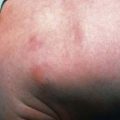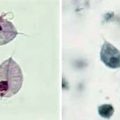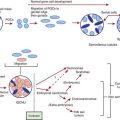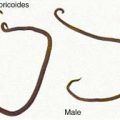Chapter 423 Cyanotic Congenital Heart Disease
Evaluation of the Critically Ill Neonate with Cyanosis and Respiratory Distress
A severely ill neonate with cardiorespiratory distress and cyanosis is a diagnostic challenge. The clinician must perform a rapid evaluation to determine whether congenital heart disease is a cause so that potentially lifesaving measures can be instituted. The differential diagnosis of neonatal cyanosis is presented in Table 95-1.
Cardiac Disease
Congenital heart disease produces cyanosis when obstruction to right ventricular outflow causes intracardiac right-to-left shunting or when complex anatomic defects, many unassociated with pulmonary stenosis, cause an admixture of pulmonary and systemic venous return in the heart. Cyanosis from pulmonary edema may also develop in patients with heart failure caused by left-to-right shunts, although the degree is usually less severe. Cyanosis may be caused by persistence of fetal pathways, for example, right-to-left shunting across the foramen ovale and ductus arteriosus in the presence of pulmonary outflow tract obstruction or persistent pulmonary hypertension of the newborn (PPHN) (Chapter 95.8).
Differential Diagnosis
Two-dimensional echocardiography is the definitive noninvasive test to determine the presence of congenital heart disease. Cardiac catheterization is less often used for diagnostic purposes, and is usually performed to examine structures that are sometime less well visualized by echocardiography, such as distal branch pulmonary arteries or aortopulmonary collateral arteries in patients with tetralogy of Fallot with pulmonary atresia (Chapter 424.2), coronary arteries and right ventricular sinusoids in patients with pulmonary atresia and intact ventricular septum (Chapter 424.3). If echocardiography is not immediately available, the clinician caring for a newborn with possible cyanotic heart disease should not hesitate to start a prostaglandin infusion (for a possible ductal-dependent lesion). Because of the risk of hypoventilation associated with prostaglandins, a practitioner skilled in neonatal endotracheal intubation must be available.







